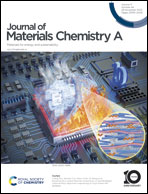Study of the effect of uranium recovery at Hap/Fe2O3 composite and Fe2O3 interfaces on the parameters of the electrical double layer
Abstract
The electric double layer (edl) in the physicochemistry of colloids and electrochemistry is a term for a model of a structure appearing at the interface of two phases. The electrical double layer is of fundamental importance in the description of complex and common structures of matter. It is the reason for the stability of many colloidal systems. The aim of the study was to compare the experimental parameters characterizing the edl at Hap/Fe2O3 composite/electrolyte and Fe2O3/electrolyte interfaces in the presence of uranium ions and to compare the adsorption mechanisms. Hydroxyapatite itself is a well-known material used in many fields, including adsorption, medicine, and catalysis. However, additional modifications have provided it with additional beneficial features, such as low price, biodegradability, reactivity and stability, which can broaden the horizon of its applications. Iron oxide as a modifying agent gives the composite primarily magnetic properties that accelerate and facilitate its recovery from aqueous solutions. The paper presents the results of SEM, XRD, and XPS analyses and porosity measurement, as well as measurements of the surface charge density and zeta potential. Experiments confirmed the effectiveness of the synthesis process. In addition, the tests showed that the composite is characterized by a well-developed specific surface with a porous structure. The presence of uranium ions affects the experimentally determined parameters of the electrical double layer, such as: surface charge density and zeta potential. Uranium adsorption turned out to be a successful process, which confirms the possibility of using this material as an adsorbent. The structure of the adsorption layer formed on the synthetic composite and Fe2O3 surface changes significantly compared to the system with additionally present U(VI) ions. The adsorption of U(VI) ions causes a decrease in surface charge density and a decrease in zeta potential. Moreover, the adsorption of uranium resulted in the formation of a monolayer on the surface of Fe2O3 and Hap/Fe2O3 samples. However, the mechanism of the process is complex, meaning that adsorption can be physical as well as chemical. In addition, it should also be emphasized that uranium is a potentially toxic pollutant mainly associated with the nuclear industry. Therefore, there is a need to develop methods for its quick and safe removal from the environment.



 Please wait while we load your content...
Please wait while we load your content...